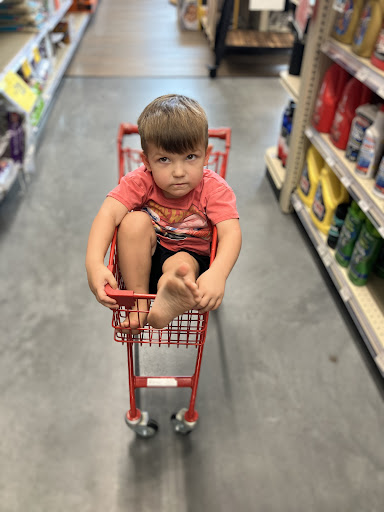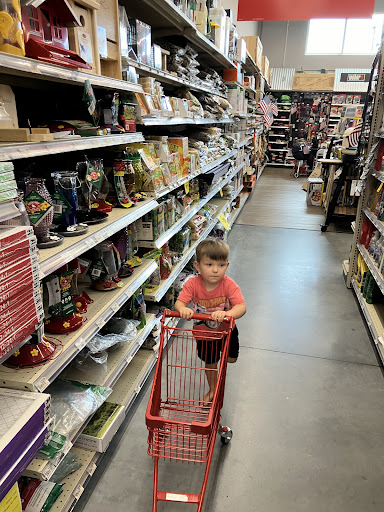Say Goodbye to Guesswork: Your Guide to Perfect Paint Color Matching
Finding the exact right shade for your painting project can be tough. Whether you’re touching up a wall, matching existing decor, or just trying to capture a color you saw, the guesswork can be frustrating. Thankfully, modern technology offers a solution: a tool to match paint color. These handy devices and apps help you identify colors quickly and accurately.
Here are the main types of tools to match paint color:
- Handheld Devices (Colorimeters/Spectrophotometers): These small, portable scanners provide highly accurate color readings from any flat surface. They shine their own light onto the surface, which leads to very precise color matches. Many professionals use these for their reliability. Prices for these tools typically range from around $60 to over $350.
- Smartphone Apps: These apps use your phone’s camera to scan colors. Many are free and come with extra features like virtual visualizers. They are great for getting color ideas on the go, but their accuracy can depend on your phone’s camera quality and lighting conditions.
The helpful team at Lowcountry Ace understands the challenge of finding the perfect paint color. We’ve helped countless homeowners and DIY enthusiasts in the Charleston area with their home improvement projects, including finding the ideal tool to match paint color for their needs. We’re here to guide you through the latest options available.
Tool to match paint color word roundup:
Why a Paint Matching Tool is Your Project’s Best Friend
Ever been there? You’ve just moved into a lovely home in James Island, and that living room color is just perfect, but oops, a scuff! Or maybe you’re a painting professional in Folly Beach, and a client wants that exact shade from a beloved antique vase. In the past, this might have meant endless trips to the paint store, squinting at tiny chips, and a whole lot of hoping for the best. Talk about frustrating! But guess what? Modern magic is here with the tool to match paint color – your new best buddy for all things paint!
These clever tools are super helpful, whether you’re a weekend DIY warrior or a seasoned painting professional. For us DIYers, they just take all the guesswork out of picking paint. No more wondering if that “greige” is too green or too gray! It turns what used to be a head-scratcher into a fun, confident choice.
By precisely identifying existing colors, we can easily avoid those dreaded mismatched touch-ups. Imagine a seamless wall that looks perfectly done – that’s the dream! And think of the money you’ll save by not buying a bunch of “almost right” paint cans that just sit in the garage.
For the pros, these tools really speed things up. They streamline the whole color picking process, helping to meet client needs with spot-on accuracy and efficiency. Organizations like the Contractors Painting and Industrial Association (CPIA) even highlight how smart sensors and color codes can save tons of valuable time. This means quicker project finishes and really happy clients. Who doesn’t love that?
And here’s a cool bonus: a tool to match paint color lets you grab color inspiration from anywhere. Saw a stunning sunset? Love the shade of a friend’s wall? Or maybe that cool art piece just screams “my living room!” With the right tool, that fleeting inspiration can quickly become a beautiful reality in your own home.
The Best Tool to Match Paint Color: A Comparison of Technologies
When it comes to choosing the best tool to match paint color, you’ll find there are two main types, each with its own perks. Let’s see how they compare!
Dedicated Handheld Scanners: For Unbeatable Accuracy
If getting the color just right is your top priority, a dedicated handheld scanner is your go-to. These smart little devices are often called colorimeters or spectrophotometers, and they are built to give you the most accurate color reading possible.
So, how do they work their magic? Unlike your phone camera, these tools shine their own controlled light onto the surface you’re scanning. Then, they carefully measure all the light that bounces back. This clever process helps them figure out the exact color, and often even the sheen (how shiny or flat the paint is). This means they aren’t easily fooled by the light in the room, which can make a big difference for less advanced tools. Many pros use these because they deliver reliable, professional-grade results. For example, some tools can boast an amazing over 90% accuracy on popular paint colors.
Of course, this level of precision comes with a price tag. You can find entry-level models starting around $60-$80, but the more advanced ones can go up to $350 or more. These powerful devices are often battery-powered and built to last, with some capable of 5,000+ scans on a single charge!
Many of these scanners connect wirelessly to a companion app on your smartphone, giving you access to huge libraries of colors. Imagine having thousands of colors at your fingertips, with some databases boasting over two million colors! These apps can also give you detailed color codes like HEX, CMYK, and RGB, which are super helpful for design work.
Smartphone Apps: For On-the-Go Inspiration
For pure convenience and a burst of color inspiration anytime, anywhere, smartphone apps are a fantastic tool to match paint color. The best part? Many of them are free to download and come packed with fun features!
How do they work? These apps simply use your phone’s built-in camera to snap a picture of a surface’s color. Then, smart programs analyze the image and suggest the closest paint colors from their own big databases. While they don’t have the fancy controlled lighting of a handheld scanner, they offer some really cool tricks. Many have augmented reality (AR) visualizers, letting you “paint” your walls right on your screen to see how a color might look in your space. The Ace Hardware Paint Visualizer Tool is a great example, letting you upload a photo of your room and try out different shades!
The biggest plus for smartphone apps is how easy they are to use. Your phone is probably always with you, making it super simple to capture a color you love on the spot. They’re perfect for building color palettes, saving your favorite shades, and even estimating how much paint you might need. Apps from major paint brands often connect you to thousands of paint colors, helping you find that perfect hue.
Now, for their main limitation: accuracy. Because these apps rely on the light around you and your phone’s camera quality, their color readings can sometimes be a bit off. How your phone screen is set up can also change how colors look. So, while they’re amazing for getting general ideas, creating mood boards, or quick estimates, they might not be precise enough for super critical touch-ups or professional jobs where an exact match is a must.
Here’s a quick comparison to help you decide which tool to match paint color is right for you:
| Feature | Handheld Scanners | Smartphone Apps (Camera-based) |
|---|---|---|
| Accuracy | High (over 90%) due to controlled light | Moderate to Low (dependent on lighting, camera) |
| Cost | $60 – $350+ (initial device purchase) | Free to download (some in-app purchases) |
| Convenience | Requires carrying a separate device | Always with you (if you have your phone) |
| Best Use Case | Professional matching, critical touch-ups, sheen detection, precise digital values | Color inspiration, virtual visualization, building palettes, quick estimates |
How to Get a Perfect Match: Tips and Tricks
No matter which tool to match paint color you choose, a little preparation and technique can go a long way in achieving the best possible match. Think of it as preparing your canvas before you paint – the groundwork makes all the difference!
Preparing Your Surface for an Accurate Scan
The quality of your scan directly impacts how accurate your color match will be. Here are some simple tips to get your surface ready:
First, clean the surface. Dust, dirt, grease, or even fingerprints can change how light bounces off the surface. This can lead to your tool reading the wrong color. Gently wipe the area you plan to scan with a clean, slightly damp cloth. Then, let it dry completely before you scan.
Next, use a flat area. A smooth, flat surface gives the most consistent and reliable reading. Try to avoid scanning textured surfaces, bumpy spots, or tight corners. These areas can trick your tool and distort the color it “sees.” Even handheld colorimeters work best on a smooth, flat surface.
Also, make sure there’s a minimum sample size. Your tool needs enough space to get a good reading. Most handheld devices only need a small clear patch, usually just an inch or two. If you’re trying to match a very small object, try to find a larger, flat part of it. Or, place it against a plain, neutral background.
Finally, remember to understand texture effects. While a tool to match paint color focuses on the actual hue, how rough or smooth a surface is can really change how we see the color. For example, a wall with heavy texture might look darker or lighter depending on how the light hits its bumps and valleys. This is true even if the paint color itself is exactly the same as a smooth sample. Keep this in mind when you look at your match!
Using Your Tool to Match Paint Color Like a Pro
Once your surface is prepped and ready, it’s time to put your tool to work. Here’s how to use your tool to match paint color like a seasoned pro:
Many dedicated handheld scanners need occasional device calibration to stay accurate. This usually means scanning a special white or black tile that comes with your device. Always follow the manufacturer’s instructions for calibration. It ensures your tool is performing its best every time.
Then, focus on proper scanning technique. If you’re using a handheld device, press it firmly and flat against the surface. Make sure no outside light creeps in from the sides. Hold it very steady while it scans. If you’re using a smartphone app, hold your phone straight and parallel to the surface. Try to keep your hand or phone from casting any shadows.
Even with the best tools, you might see slight differences between readings. That’s why we recommend taking multiple readings from different spots on the same surface. Most apps and devices can average these readings or let you pick the most consistent one. This helps confirm your results and avoids getting a strange, one-off reading.
If you’re using a smartphone app, remember to understand lighting for apps. Since these apps rely on the light around you, try to scan in consistent, neutral lighting. Avoid direct sunlight or very dim conditions, as these can really change how the color appears. Natural daylight, without direct sun, is usually the best choice.
Lastly, it’s important to interpret your results. Your tool to match paint color will typically show you the closest paint colors from its database. It might even give you a “match percentage” or suggest other similar options. Think of these as helpful suggestions, not absolute rules. We always encourage you to think about your project’s context and use your own good judgment.
The helpful team at Lowcountry Ace is always here to help you understand these readings and find that perfect shade for your project!
Key Features to Consider Before You Choose
Alright, so you’re ready to dive in and pick your perfect tool to match paint color? That’s fantastic! But before you choose, let’s chat about what really makes one of these gadgets shine. It’s not just about the price tag; it’s about finding the right fit for your projects. Think of it like picking the perfect paintbrush – you want one that feels right and does the job beautifully.
First up, and arguably the most important, is Accuracy Rating. Why does this matter so much? Well, a tool that’s super accurate means less guesswork for you and a much happier result on your walls! You’re looking for tools that proudly state their precision, with many high-quality scanners offering over 90% accuracy.
Next, let’s talk about getting around. Portability is a big deal if you plan on taking your color-matching trips beyond your living room. Imagine you’re out and about, seeing a color that just screams “my next accent wall!” You want a tool that’s lightweight and slips easily into your pocket or bag. Some models, for example, weigh less than an ounce, making them incredibly easy to carry. And speaking of being out, Battery Life is crucial. Nobody wants their color-matching fun cut short by a dead battery! If you’re a professional or just a very enthusiastic DIYer, look for tools that can handle thousands of scans on a single charge. Many devices offer several hours of continuous use, which is plenty for most home projects.
Now, let’s talk about the digital side of things. Most of these smart tools connect to an app on your phone, so App Usability is key. A fantastic tool can feel frustrating if its app is clunky or hard to steer. Look for apps that are intuitive, easy to understand, and stable. Reading user reviews in app stores can give you a good heads-up on how well an app performs in the real world. Hand-in-hand with the app is the Paint Library Size. The more colors a tool can recognize from major brands like Benjamin Moore, the better your chances of finding that exact match without hassle. A tool that can access and match across many different paint lines is incredibly versatile!
Finally, think about how you’ll use the color information. Many apps offer awesome Palette Creation Tools. This means you can save scanned colors, compare a few options side-by-side, and even build entire custom color palettes for your home. It’s super helpful for planning bigger projects or coordinating different rooms. And for those who love precision or work with digital designs, some tools provide Digital Color Values like HEX, CMYK, RGB, LAB, LCH, LRV, HSB, and HSV. These are like the secret code for colors, letting you communicate exact shades for design software or with other pros. You can dive deeper into what these values mean and how they relate to paint matching by checking out Hex Color Codes, Paint Matching and Color Picker.
By keeping these features in mind, you’ll be well on your way to choosing the perfect tool to match paint color that suits your unique needs and helps you create the home of your dreams.
Frequently Asked Questions about Paint Matching
We often get questions from our customers at Lowcountry Ace about how these amazing tools work and what their limitations might be. Let’s address some of the most common ones.
How accurate is a tool to match paint color on a phone?
This is a great question, and the answer is a little bit nuanced! While a smartphone app can be a super convenient tool to match paint color for initial inspiration or general ideas, it’s important to know its limits when it comes to getting a truly perfect match.
Think about it: your phone’s camera sees color based on the light around you. So, direct sunlight, a dimly lit room, or even the type of light bulb (like a warm or cool one) can really change how the camera “sees” a color. Plus, not all phone cameras are made equally; a high-end camera will usually give you better results than an older one. Even your phone screen itself can show colors a little differently based on its settings.
Because of these factors, we usually suggest phone-based apps for getting a good idea of a color, creating a mood board, or even using augmented reality to “see” a color on your wall. They’re fantastic for getting started and narrowing down your choices.
However, if you need a perfect match for a small touch-up on an existing wall, relying only on a phone app might lead to a visible difference. For those really critical jobs, a dedicated handheld colorimeter or our expert in-store paint matching service will give you much more precision. What you see on a digital screen (made of light) is different from how physical paint (made of pigments) looks on a wall!
Can these tools match paint sheen?
This is where some of the more advanced handheld devices really shine!
Yes, certain specialized handheld colorimeters can actually tell you not just the color, but also the sheen. Think about it: flat, eggshell, satin, or semi-gloss. Knowing the sheen is a huge advantage because it dramatically changes how a color looks under different lighting.
Most camera-based smartphone apps, though, aren’t designed to figure out paint sheen. They’re mainly focused on identifying the color itself.
It’s super important to know the sheen, especially for touch-ups. Even if you get the color absolutely perfect, if the sheen is wrong, the new paint can look completely different from the old. A color might appear lighter and brighter in a semi-gloss finish compared to the exact same color in a flat finish. So, always confirm the sheen separately, especially when consistency is key!
Do I still need a physical paint sample after using a tool?
Absolutely, yes! We can’t stress this enough. While a tool to match paint color is an amazing piece of technology, it’s a fantastic first step, not the final one.
The colors you see on a screen – whether it’s your phone, tablet, or computer – are fundamentally different from how paint truly looks on a wall. Digital colors are created with light, while paint colors are made of pigments that reflect light. It’s like trying to perfectly compare apples and oranges; there’s just an inherent difference between a screen display and a physical paint.
The most important step is always to test a physical paint sample right in your own home, on the actual wall you plan to paint. Paint colors can look wildly different depending on natural light, artificial light, shadows, and even the other colors in the room. What looks perfect in the store or on your screen might look completely different in your living room!
That’s why we always recommend taking home sample sizes of paint. At Lowcountry Ace, we offer samples from leading brands like Benjamin Moore, Magnolia Home by Joanna Gaines, and Clark + Kensington. You can even get free paint color swatches from Glidden. Just paint a small, out-of-the-way spot, applying two coats for the truest color. Then, watch it throughout the day in different lighting conditions.
Think of your digital tool to match paint color as your matchmaker, giving you a really strong lead. But the physical sample is like the first date – you need to see if there’s real chemistry right there in your home! This final confirmation step ensures you’ll be absolutely thrilled with your finished project.
Find Your Perfect Hue and Get Painting
Choosing the perfect paint color for your home doesn’t have to be a guessing game anymore. Thanks to amazing technology, finding that ideal shade is now easier than ever. Whether you lean towards the super precise readings of a dedicated handheld scanner or love the quick inspiration a smartphone app provides, a tool to match paint color can truly be your guiding star. Each option has its own unique strengths, and understanding these will help you pick the very best one for your project.
These clever tools are fantastic for everyone! For our DIY friends in Charleston, they take away all the guesswork and stress. And for professional painters working in James Island or Folly Beach, they really speed up the process, saving valuable time and cutting down on wasted paint. They lead to much happier results and a paint job you’ll love.
While these tools are brilliant for helping you find and imagine colors, the most important test always happens right on your wall. Seeing a physical paint sample in your own home, under your unique lighting, is the final, crucial step to making sure it’s truly “the one.”
Once you’ve zeroed in on that perfect hue, the helpful team at Lowcountry Ace is excited to help you take the next step. We’re your go-to spot for all things paint, offering top-quality brands, friendly advice, and everything else you need to turn your vision into a vibrant reality. We’re here to make sure your painting project is smooth, successful, and wonderfully colorful. Come visit us at the Riverland Market on Folly Road, or explore more of our services online!
More info about our paint services
Lowcountry Ace Hardware: Your one-stop shop for home improvement. We offer quality products from trusted brands and expert advice from our experienced staff. Located on James Island, visit us for tools, hardware, fishing gear, power tools, building materials, grills & smokers, electrical and plumbing supplies, and more.
















